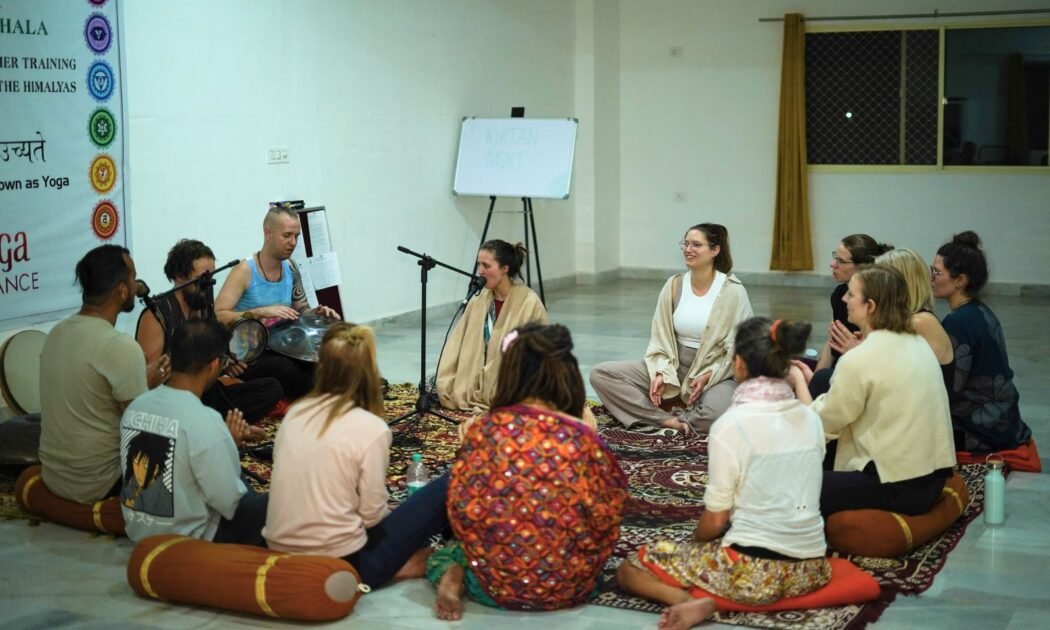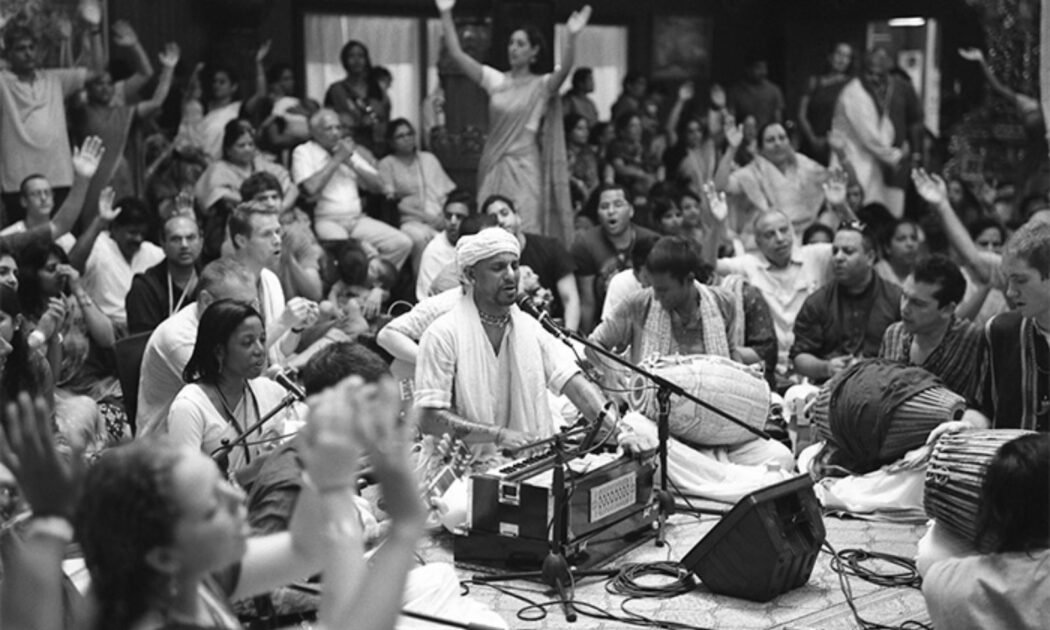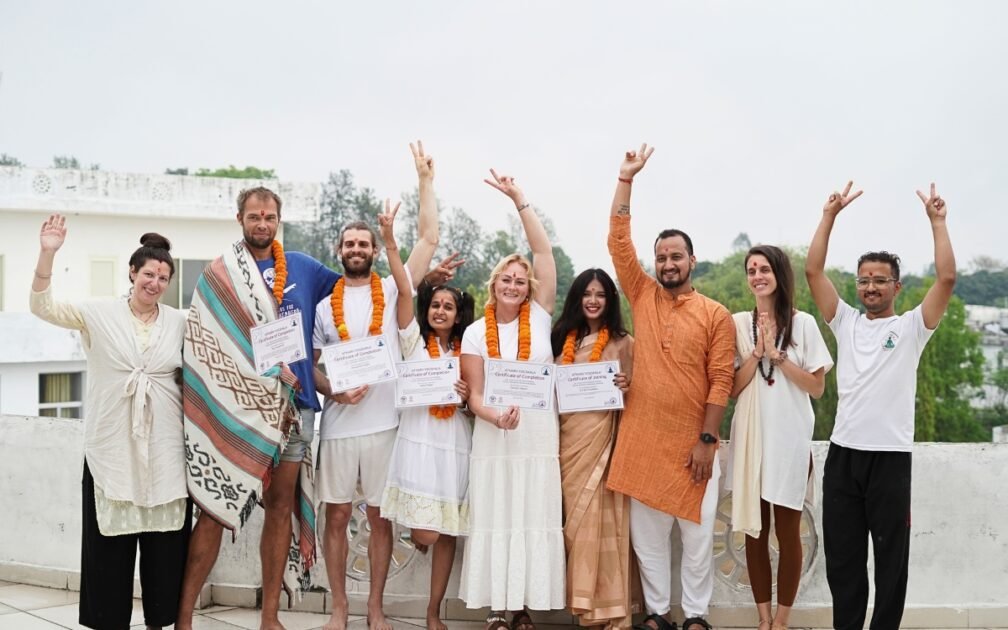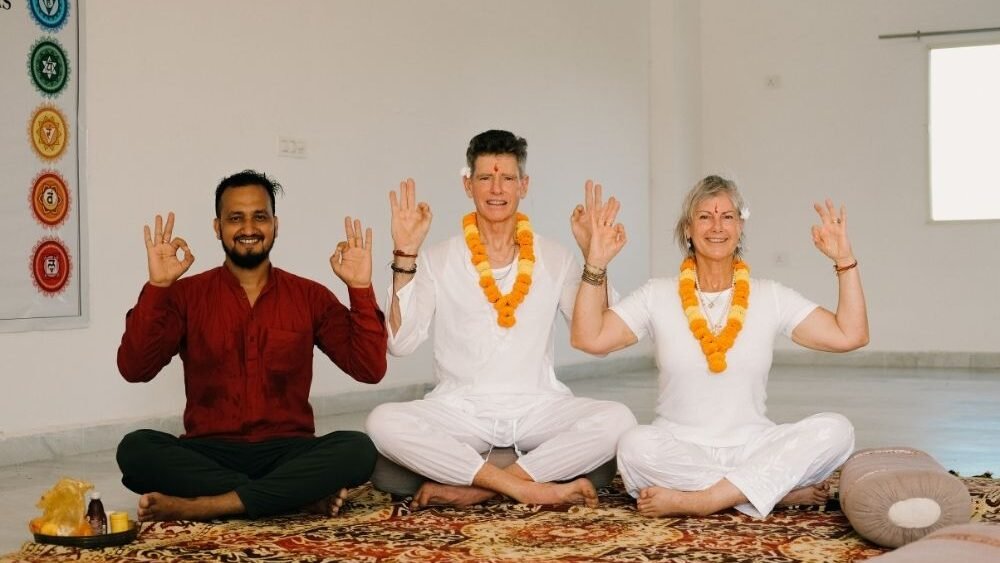
In an age where human beings are increasingly entangled in the complexities of modern life—struggling with stress, anxiety, and a deep sense of disconnection—ancient practices offer a pathway back to simplicity, connection, and inner peace. One such practice is Kirtan, a sacred form of musical chanting that has echoed through temples and hearts for thousands of years. But kirtan is not just an ancient ritual or a devotional activity confined to spiritual communities; it is a transformative experience that nourishes the body, calms the mind, and elevates the spirit.
This blog post explores the profound significance of kirtan in human life, delving deep into its physical, mental, emotional, and spiritual impacts. Whether you are a spiritual seeker, a health enthusiast, or someone curious about ancient wisdom, this exploration of kirtan offers insights into how this simple yet powerful practice can lead to holistic well-being.
What is Kirtan?
Kirtan, derived from the Sanskrit root ‘kirt’ meaning “to narrate, recite, or glorify,” is a call-and-response style of devotional chanting, traditionally practiced in India but now embraced worldwide. It typically involves the repetition of mantras or the names of the Divine, accompanied by musical instruments like the harmonium, mridangam (drum), kartals (cymbals), and tanpura.
Unlike silent meditation or individual prayer, kirtan is a collective experience, drawing people together to sing and express their devotion. But kirtan is not just for those on a spiritual path—it’s a universal tool for awakening joy, fostering emotional healing, and building a deep sense of unity.

The Ancient Roots and Universal Appeal
Kirtan has its roots in Bhakti Yoga, the path of devotion described in India’s ancient scriptures like the Bhagavad Gita and Bhagavata Purana. Saints and sages such as Narada Muni, Chaitanya Mahaprabhu, Meera Bai, and Tukaram spread the practice of kirtan as a simple yet profound method to attain spiritual awakening.
Today, kirtan transcends religion and culture. Whether chanted in a temple in India, a yoga studio in New York, or a music festival in Europe, its impact on the human soul is universal. The essence of kirtan lies not in the language or the form but in its vibrational energy, which harmonizes the body, mind, and spirit.
Kirtan and the Human Body
While kirtan is often viewed as a spiritual practice, its physical benefits are grounded in science and experience. Singing and chanting are bodily acts, and kirtan offers numerous benefits for physical health.
- Breath Regulation and Lung Health
Kirtan involves controlled breathing and the repetition of sounds in rhythmic patterns. This conscious use of breath:
• Strengthens respiratory muscles.
• Improves lung capacity.
• Enhances oxygen intake, which in turn improves circulation.
• Activates the parasympathetic nervous system, promoting relaxation.
When you chant during kirtan, the practice often involves long, deep exhalations. This type of breathing stimulates the vagus nerve, responsible for slowing the heart rate and reducing stress.
- Vocal Health and Expression
Regular chanting during kirtan strengthens the vocal cords and improves voice clarity and tone. Many people, even those who feel shy or introverted, find their voices opening up through the safe, communal environment of kirtan. This has therapeutic benefits, helping individuals find their voice—both literally and metaphorically.
- Endorphin Release and Hormonal Balance
Engaging in kirtan leads to the release of endorphins, the body’s natural feel-good chemicals. This creates a sense of euphoria and well-being. The repetitive, rhythmic nature of chanting stabilizes brain wave patterns, promoting hormonal balance and reducing cortisol, the stress hormone.
- Cardiovascular Health
The calming effect of chanting lowers blood pressure, slows the heart rate, and supports overall cardiovascular health. Research indicates that activities like chanting and singing can reduce the risk of heart disease by fostering relaxation and reducing inflammation in the body.

Kirtan and the Human Mind
The modern human mind is constantly overloaded with information, distractions, and stressors. Kirtan offers a powerful antidote to the mental agitation that characterizes much of modern life.
- Meditation in Motion
Kirtan is often described as active meditation. Unlike traditional seated meditation, which some find difficult due to restless thoughts, kirtan engages the voice, ears, and body, making it easier to remain present.
By focusing on repetitive sounds and melodies, the mind becomes still, breaking free from its habitual patterns of worry, fear, and overthinking.
- Stress Reduction and Anxiety Relief
Scientific studies have shown that chanting mantras and singing can reduce stress and anxiety. The rhythmic chanting during kirtan slows brainwave activity, moving it from beta waves (associated with active thinking and stress) to alpha and theta waves, which are linked with deep relaxation and meditation.
Kirtan activates the parasympathetic nervous system, reducing the body’s stress response and lowering levels of adrenaline and cortisol.
- Enhanced Focus and Mental Clarity
Regular participation in kirtan sharpens mental focus and improves concentration. As the mind becomes trained to focus on the mantra and melody, it develops the ability to remain centered, even outside of the practice.
Kirtan can also help dissolve mental blockages and limiting beliefs that hold us back from experiencing peace and fulfillment.

Kirtan and Emotional Healing
Our emotions are powerful forces that can either uplift or weigh us down. Kirtan offers a profound method for emotional release and healing, providing a safe space to express feelings and process deep-seated emotional wounds.
- Emotional Expression and Catharsis
In kirtan, there is no judgment. People are free to sing loudly, softly, off-key, or with tears streaming down their faces. This non-judgmental space allows for authentic emotional expression.
Many people experience emotional catharsis during kirtan—releasing pent-up sadness, grief, anger, or fear—often without even knowing why. The vibrations of sacred sound penetrate the subconscious mind, where many emotional wounds are stored.
- Joy and Ecstasy
The practice of kirtan generates feelings of bliss and joy. Participants often describe an overwhelming sense of love, gratitude, and connection. Singing together in a group fosters a sense of belonging and unity, alleviating feelings of loneliness and separation.
- Healing Trauma
Kirtan has been found to be especially powerful for those recovering from trauma. The repetitive chanting helps retrain the brain and nervous system, bringing a sense of safety and grounding.
Kirtan and the Spirit
At its core, kirtan is a spiritual practice designed to awaken the soul and reconnect us with the Divine. It is the heart of Bhakti Yoga, the yoga of devotion.
- Connection to the Divine
Chanting the names of the Divine in kirtan is considered one of the most potent spiritual practices in many traditions. Whether you call upon Krishna, Rama, Shiva, Durga, or use universal mantras like Om, kirtan opens the heart to a direct experience of the divine presence.
This heart-centered devotion transcends dogma and doctrine. Kirtan awakens bhava, the ecstatic emotion of love for the Divine, which leads to self-realization and spiritual liberation (moksha).
- Purification of the Heart and Mind
The repetitive chanting in kirtan is said to purify the heart and mind. Ancient texts describe how chanting removes karma and negative impressions (samskaras), allowing the soul to shine in its true essence.
As the heart opens, we experience deeper compassion, forgiveness, and unconditional love—qualities that naturally arise from the soul.
- Expansion of Consciousness
Kirtan expands consciousness, taking practitioners beyond the ego-self into a state of oneness. The vibrations of mantra chanting awaken kundalini energy, activate the chakras, and facilitate inner transformation.
Many kirtan practitioners describe experiences of samadhi, or spiritual absorption, where the sense of separateness dissolves and only the presence of the Divine remains.

Kirtan as a Path to Unity and Community
In a fragmented world, kirtan brings people together in unity. It is often said that “where there is kirtan, there is no difference of caste, creed, or nationality.”
- A Community of the Heart
Kirtan gatherings are inclusive spaces, where everyone is welcome regardless of background. Singing together breaks down barriers and judgments, uniting people in a shared experience of love and devotion.
- Seva and Collective Healing
Participating in kirtan is also a form of seva, or selfless service. By contributing your voice and energy, you help create a healing environment for others. The collective energy of kirtan is exponentially more powerful than any individual practice.
The Science Behind Kirtan
Modern science is beginning to catch up with what ancient yogis have known for millennia. Studies show that chanting mantras and participating in group singing:
• Reduce symptoms of depression and anxiety.
• Increase levels of oxytocin, the “bonding hormone.”
• Promote neuroplasticity, creating new, positive patterns in the brain.
• Activate the limbic system, associated with emotion and memory.
• Synchronize heart rhythms and brain waves, fostering a deep sense of peace.
Practical Tips to Begin Your Kirtan Journey
If you are inspired to experience kirtan for yourself, here are some simple steps to get started:
- Attend a Local or Online Kirtan Event
Many yoga studios, temples, and spiritual centers host regular kirtan gatherings. Online communities and virtual kirtans are also widely available.
- Start Small with Personal Practice
You don’t need to be a musician or singer. Begin by chanting a simple mantra like Om Namah Shivaya or Hare Krishna, repeating it gently and rhythmically.
- Create a Sacred Space
Set up a quiet, peaceful area with a candle or incense. Use a harmonium, drum, or simply your voice.
- Let Go of Judgment
There is no “right” way to do kirtan. Sing with an open heart, free from judgment or expectations.

Conclusion: Kirtan as a Way of Life
Kirtan is more than a spiritual practice or a musical expression—it is a way of life. It invites us to live from the heart, to embody love, and to recognize the divine presence in all beings.
In the words of Sri Chaitanya Mahaprabhu, one of the greatest kirtan saints:
“Chant the holy names, dance, and be happy.”
As we immerse ourselves in kirtan, we heal the body, calm the mind, and awaken the spirit. In a world longing for connection and meaning, kirtan offers the song of the soul, leading us back to our true nature— joyful, loving, and free.
Final Thought
If you’ve ever felt the need to reconnect with something greater than yourself, if you’ve ever yearned for inner peace or community, kirtan might be the simple, yet profound, practice that brings you home.












Leave a comment: